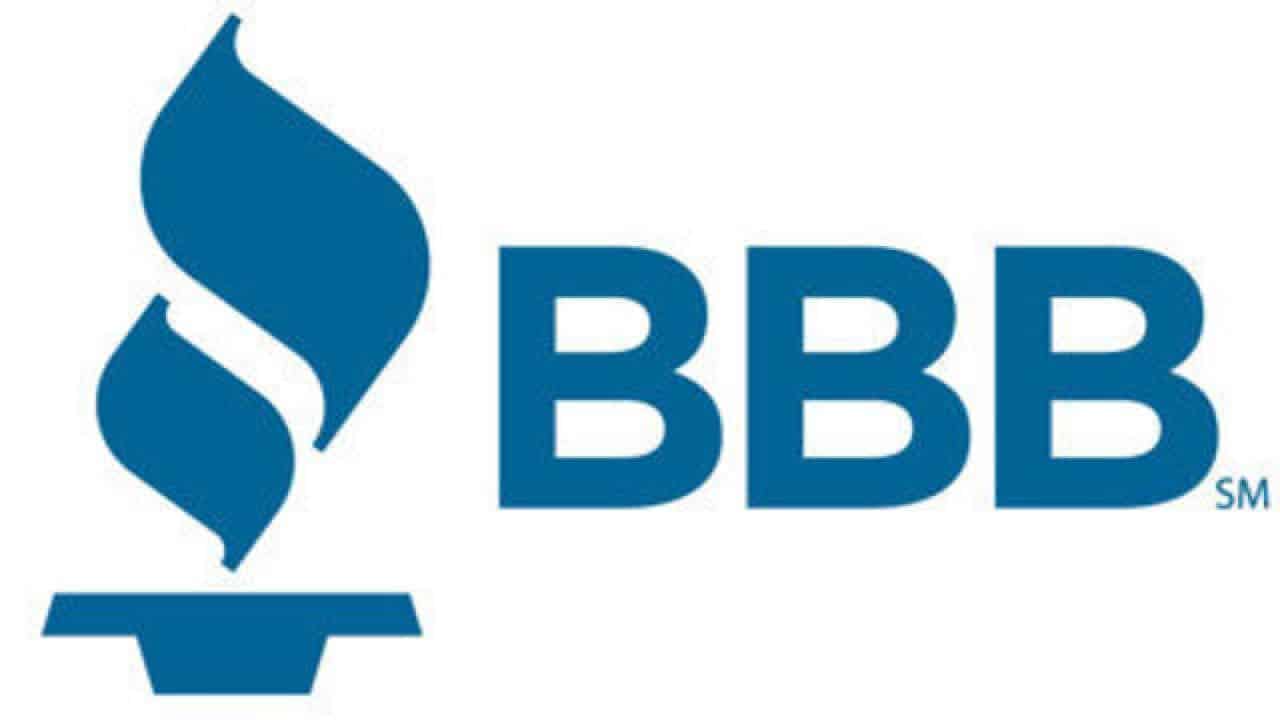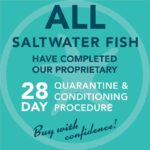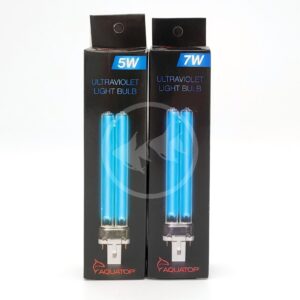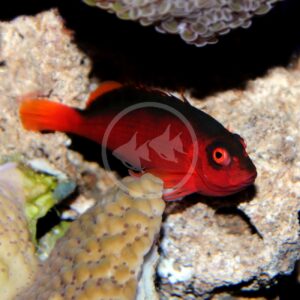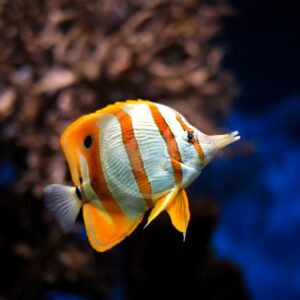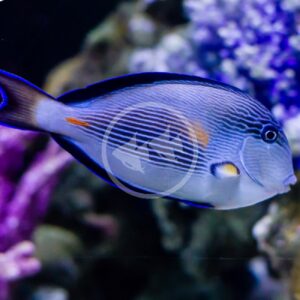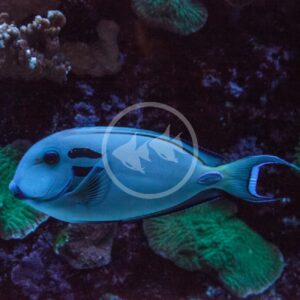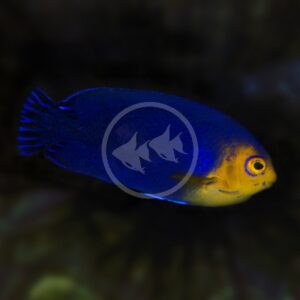Care Level: Moderate
Temperament: Semi-Aggressive
Reef Compatible: No
General Description: The Blueline Angelfish, also known as the Blue Striped or Blue Banded Angelfish, is found in the western Pacific, primarily around Taiwan and Japan. Both juvenile and adults of the Blueline angel look the same, with the exception of a yellow line behind the face of the juvenile that altogether disappears once it reaches 2.5″ to 3″. This angelfish is unlike any other, with its dazzling electric blue horizontal stripes, mustard colored body and bright yellow tail. The availability of the Blueline angel is seasonal, typically seen only during the summer and fall months. With this narrow window of opportunity, the Blueline angel is considered rare and has a price tag to match. Despite this, it is a relatively hardy species and adapts very well to aquarium life if provided the adequate environment (see ‘Care Requirements’ below). An adult Blueline angel can reach a size of approximately 8″.
Diet Requirements: In the wild large angelfish are very omnivorous. A varied diet of high quality algae, proteins, pellets, flakes, and enriched frozen foods are important for best coloration, immune function and optimal health. Angelfish specific foods that include sponges are highly recommended for this species.
Care Requirements: An established minimum 125 gallon aquarium is ideal for smaller specimens. This angelfish absolutely requires a variety of rock work and crevices to take refuge and graze off of. Upon introduction, the Blueline angel can be quite shy and secretive but will become more courageous with time. This angelfish is intolerable of nitrite or ammonia. The Blueline angel is rather non-confrontational with most tank-mates and should not be kept with overly aggressive or pugnacious species. The Blueline angel may have territorial – aggressive conflicts with conspecifics (including other species within the genus). If you want to house multiple types of larger angelfish together, it is best to add them all at once, or closely together at the very least, and as juvenile or sub-adult specimens (which are not nearly as territorial as adults) for the best chance of success. If you want to house a dwarf angel (Centropyge) in an aquarium with a larger angelfish species, adding the dwarf angelfish alone first to allow it to settle in tends to be the most successful. A large aquarium is necessary in order to accomodate multiple angelfish from any genera long term. All of our recommendations can certainly vary on an individual basis. The Blueline angelfish does not make a good reef inhabitant because they have been observed to nip at stony and soft corals and clam mantles. Recommended water conditions, 72-78° F, KH 8-12, pH 8.1-8.4, salinity 1.020-1.025.
Purchase Size: Changing Medium: 2-1/4″ to 3-1/2″
Note: Your item may not look identical to the image provided due to variation within species. Purchase sizes are approximate.

